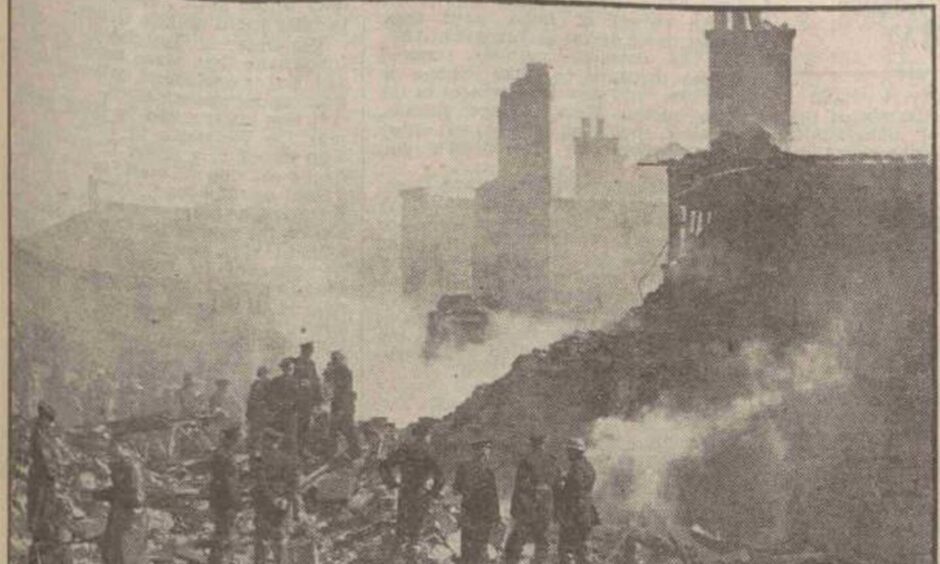
On May 20 1945, Lossiemouth was a town revelling in peace.
World War Two was over in Europe.
The daily diet of death, fear and insecurity was gone.
It doesn’t take much to imagine the joy and relief in people’s hearts.
Then abruptly, that quiet Sunday morning, tragedy struck the town.
A Wellington bomber on a test flight from RAF Lossiemouth fell from the sky and hit a row of council houses.
It resulted in the loss of eight civilians, six of them from the same family, and three RAF air crew.
From a town celebrating the end of the war less than a fortnight earlier, Lossie was now a town in mourning.
RAF bomber crashed into Lossiemouth homes…
Lossiemouth’s war had already had profound effects on the humble fishing town.
RAF Lossiemouth opened in 1939 and played vital part in the war effort, particularly as a strategic base for bombing missions.
The war came close to home on October 26 1940, when the base was attacked by the German Luftwaffe, killing one RAF officer and two air crew.
A four-man German crew also died and were buried in Lossiemouth.
More German bombs struck the town
Less than a year later, on July 11 1941, a German Junkers 88 fighter dropped four bombs over the town, possibly mistaking it for the RAF base.
The first bomb hit Kinneddar Street resulting in injuries to members of the Souter family.
The second bomb hit 6 Dunbar Street, killing Mr and Mrs John Wilson and their house guests Mr and Mrs Joseph Leighton, who had fled Portsmouth and come to Lossie to try and escape the worst of the war.
Their daughter was married to an RAF officer at the base.
Two more bombs were dropped that night, one fell on King Street, the other in a nearby quarry.
Tragedy as RAF bomber falls from sky in Lossiemouth…
But all that trauma was rapidly becoming history after VE day, and the community was looking forward to the future.
Just before 10am on Sunday May 20, at RAF Lossiemouth, a Wellington bomber crewed by RD Rickard from Manchester; DR Cameron and CGW Mawby from South Ealing were preparing to take off on a test flight.
At the same time, the Flood family were stirring at home in their upper council house on the block 43, 45 and 49 Church Street.
A lazy Sunday morning
John Flood and his 11-year old daughter Jeanie decided to treat the rest of the family to tea in bed, and were in the kitchen.
Mum Joey Flood and her other five children were at the other end of the house.
Their next door neighbours upstairs, Judith Allan, 66 and her adopted daughter Vera were also having a lazy morning before church.
Then tragedy struck…
Meanwhile things were going wrong on the test flight.
An eyewitness said the plane failed to gain height as it flew over Coulard Hill in an easterly direction, and was struggling, its engines cutting out.
He told the P&J: “The pilot was obviously making a supreme effort to get the bomber clear of the own and make for the sea.
“But the plane whirled three times, the engines suddenly became silent and the machine dropped like a stone on top of a block of flatted municipal houses.
Explosion and flames
“Part of the fuselage fell in front of the building and the other part in the garden at the rear. The plane completely disintegrated. There was a loud explosion and in a matter of seconds the plane and the block of houses were enveloped in flames.
“Had it gone three yards farther the plane would have missed the houses and fallen in the open space formed by the old Market Square.”
In an instant, 11 people lost their lives.
The Allans were gone
Vera Allan died in bed. Her mother Judith, who had lost a son in France in 1940 and whose surviving son was serving with the Seaforths in India, was charred and barely recognisable when she was found.
Downstairs, other residents scrambled to safety.
Unbearable tragedy struck the Flood family
The fate of the Flood family was unimaginable.
Mum Joey Flood and five of her six boys were trapped in their blazing home and perished in the flames.
John Flood threw Jeanie, 11, out of the window, a 15ft drop, saving her life.
He grabbed his youngest, three year old David and headed for the window, but the wall caved in from the force of one of the explosions.
David wrenched from his father’s arms
The boy, David, was wrenched out of his hands and died, while at the same time John Flood was blown out through the window.
He and Jeannie were the only survivors from their family of eight.
Joey, aged 37, Jack, James, Sinclair, Michael and David died. The boys ranged in age from three to 15.
Fire tenders from the RAF base rushed to the scene along with wartime National Fire Service detachments from Lossiemouth and Elgin and civil defence personnel, but their efforts were in vain.
Immediately after the crash, the Women’s Voluntary Service went into action, seeing to the homeless and organising food and clothes for the survivors.
The Floods were a well-known Lossie family.
John, 38, was employed as a carter with Miller Alexander carting contractor in Ogston Place.
Poignant scenes at the funeral
A few days later came a funeral for all eight civilian victims.

The Evening Express reported that practically the entire community turned out for the tragic occasion.
“The funeral took place from the old and now disused Chapel of Ease which serves as a public mortuary and where the bodies had rested.
“Fisherwomen in deep morning, many of them with young children in their arms, along with their menfolk, man of who had come straight from the fishing grounds earlier than usual to attend the funeral were amongst the crowd.
“Many wept openly during the funeral obsequies outside the Chapel where a short but impressive service was conducted by the Rev N M Sammon, of the High Church.
“The three young children were in white coffins.
“Behind them lay banks of wreaths.
“A tragic figure during the service was the bereaved husband John Flood, who in carpet slippers and able to walk with the aid of a walking stick, and his relatives, remained seated during the service, his eleven year old daughter Jeannie who was the only one of the family saved, clasped to his side.”
Afterwards RAF personnel bore the coffins to RAF vehicles as the band, with muffled drums played Flowers of the Forest.
Behind the cortege to Lossiemouth cemetery came 200 school boys, many friends of the Flood boys.
“Then followed a car with Mr Flood, his young daughter and mother and father.
“Then members of the Town Council and next of kin, detachments from the RAF rescue party, NFS coastguards and postmen with the general public taking up the rear. ”
Memorial stone erected half a century later
A memorial stone of the site of the tragedy was erected in 1995, with funds from the RAF, local clubs and Grampian Region councillors.
At that time, survivor Jeannie then aged 60 and living in Hawick came to Lossie to carry out the unveiling.
She said: “I have never forgotten my mother and brothers. I was only 10 years old but it is still as fresh in my mind as the day it happened.”
Her father John, who brought her up after the accident, died in 1965 when he fractured his skull falling down the stairs.
Marking the 80th anniversary this year
To mark the 80th anniversary of the tragedy, Tuesday, May 20 2025, Lossiemouth Men’s Shed have organised a wreath-laying ceremony.
An RAF Lossiemouth detachment will attend, as will Lossiemouth Men’s Shed and the chaplain and pupils from St Gerardine’s school.
Assembly at Mercator Green, Church Street, Lossiemouth is at 9.30am, with two minutes silence at 9.52am, followed by the wreath laying and dispersal at 10am.
If you enjoyed this story, you may also like:
Was your Aberdeen street hit by tragedy in WW2? Our map shows addresses of more than 1,000 victims
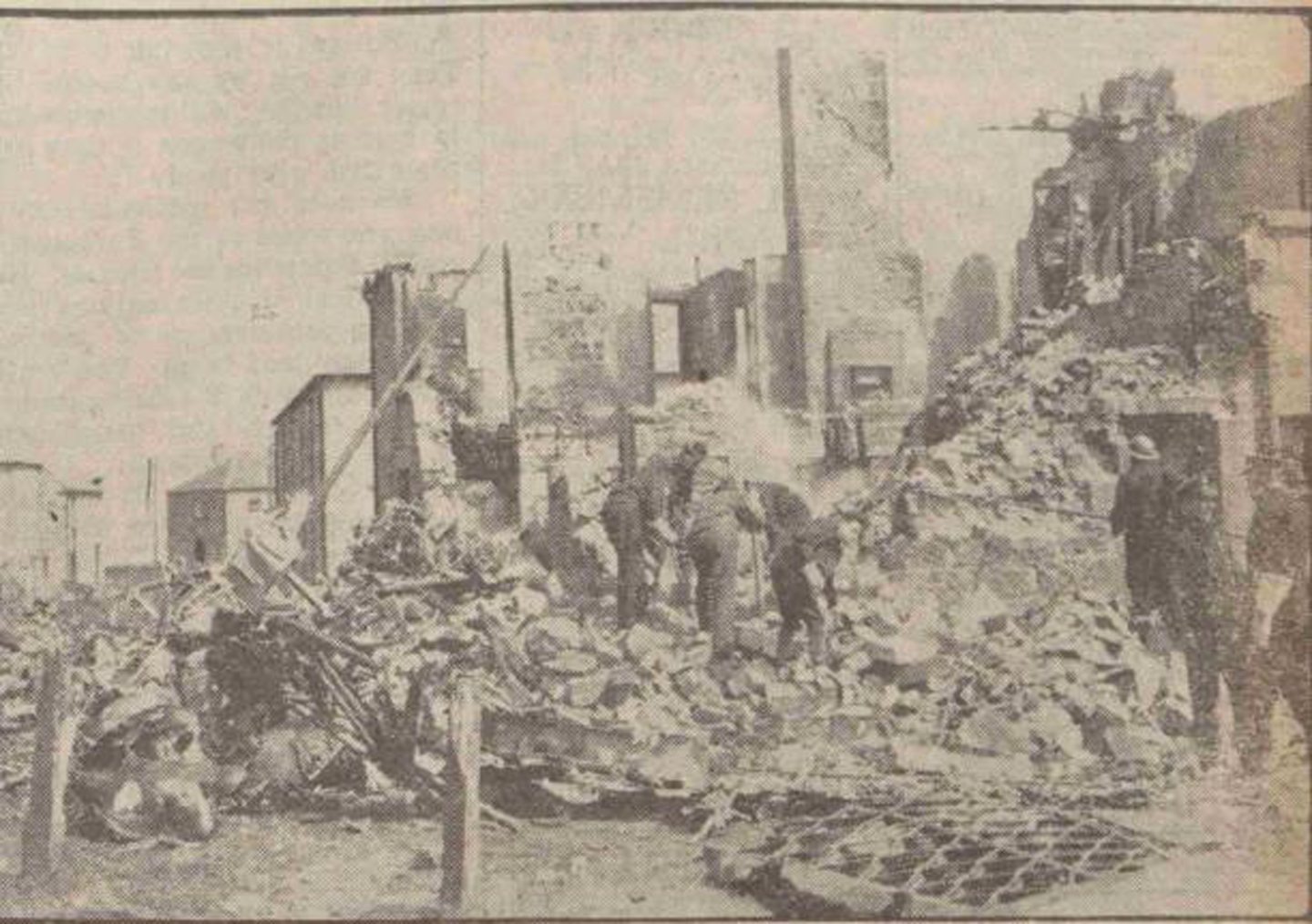
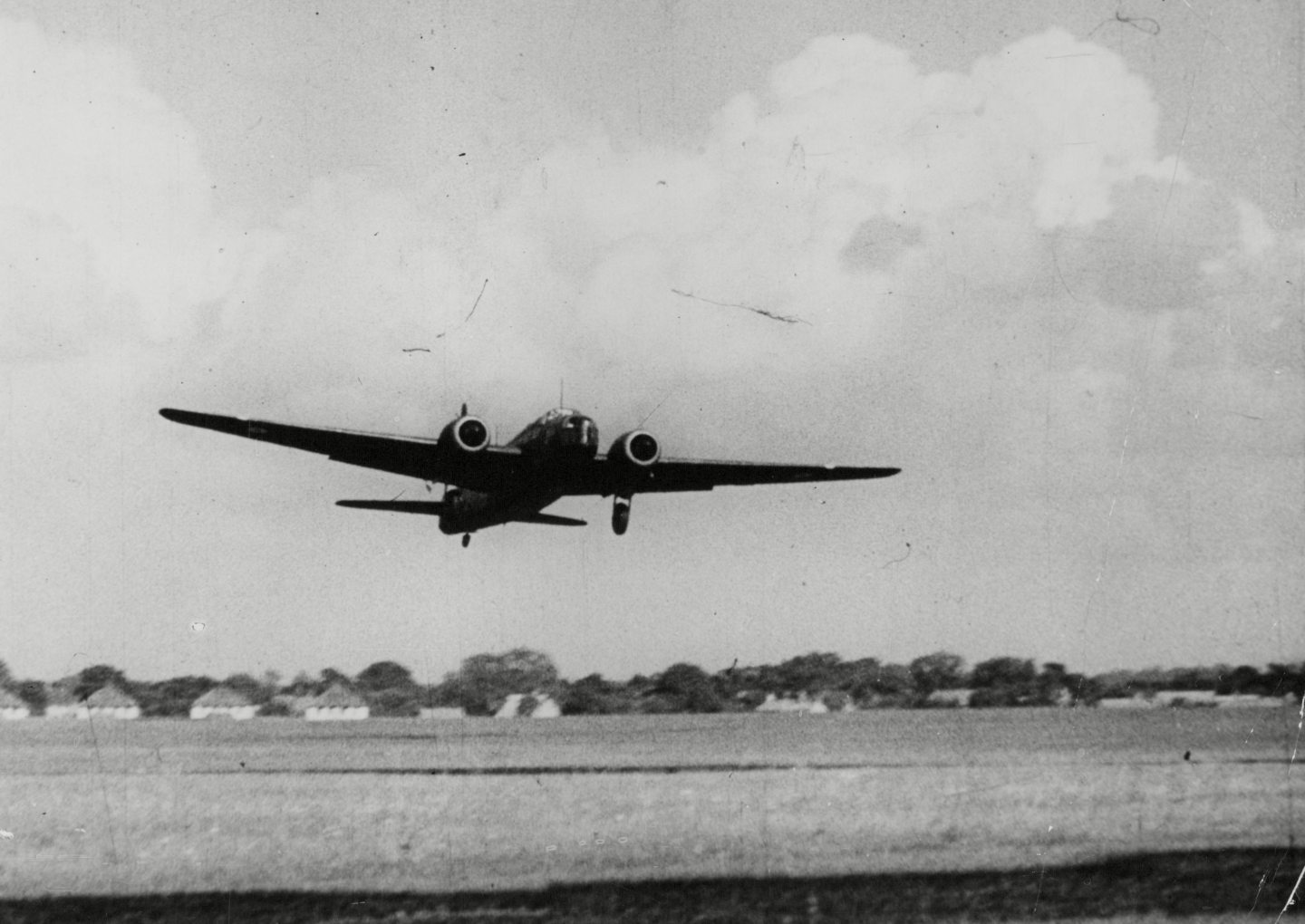
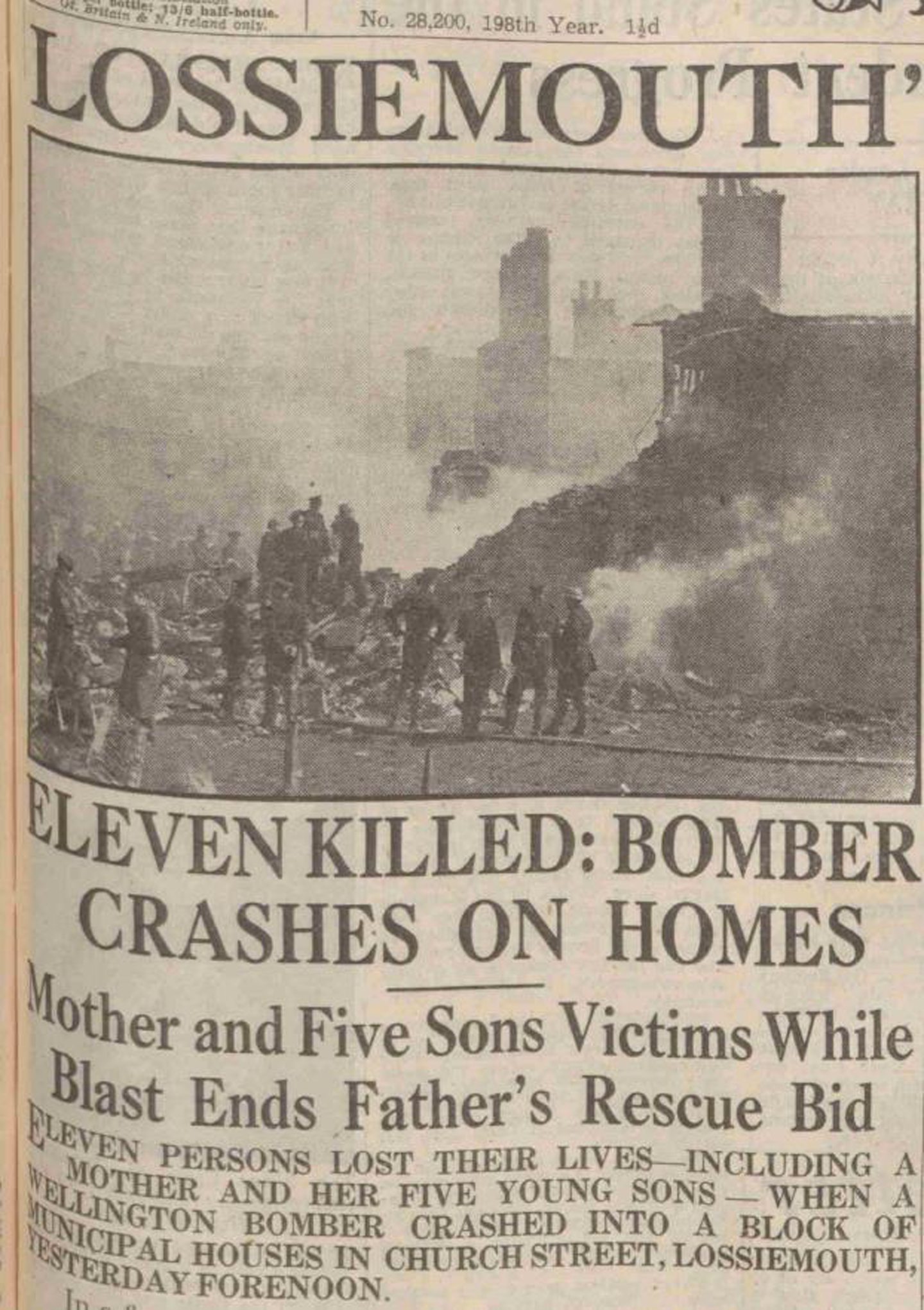

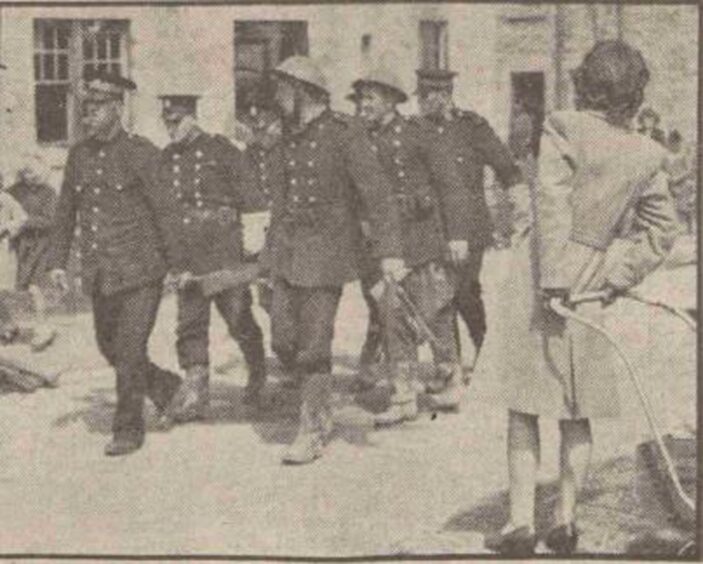
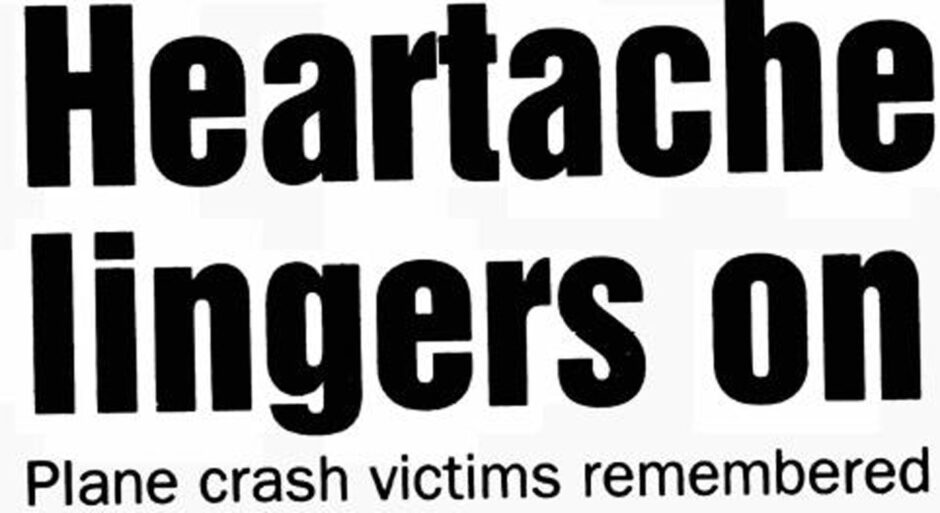
Conversation